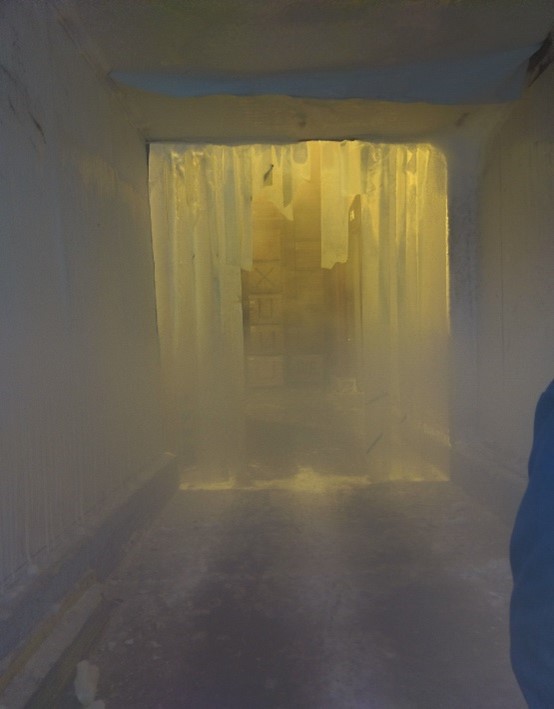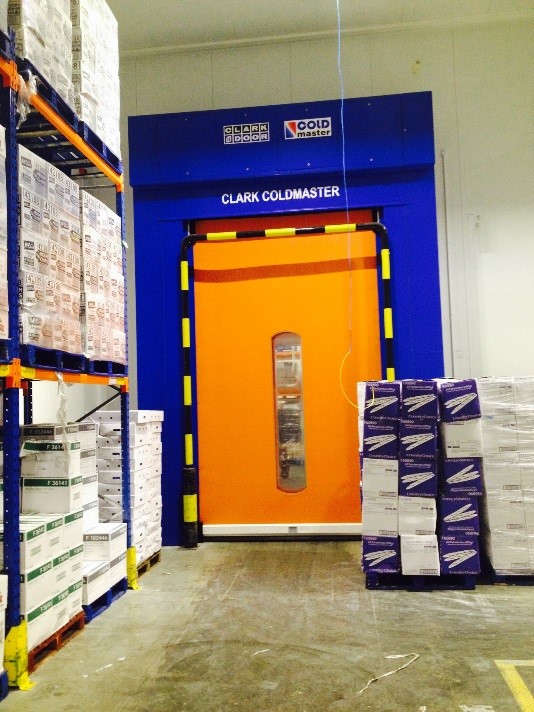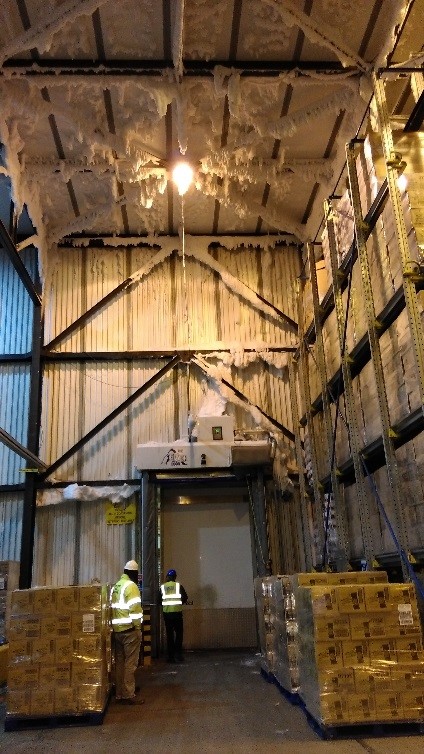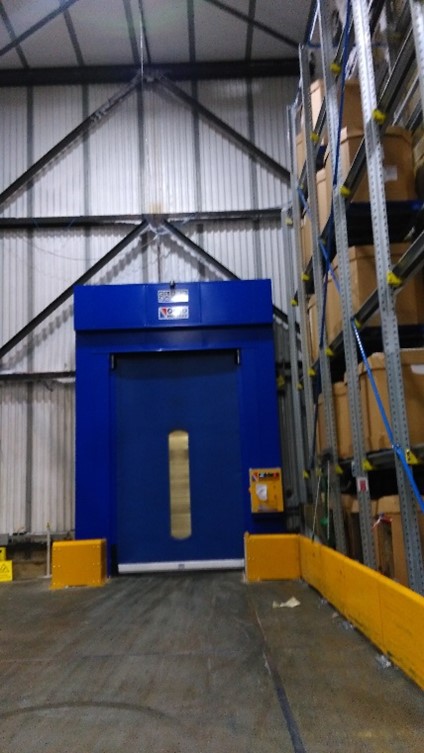Articles
Clark Door Suggests How to Improve Energy Efficiency and Reduce Ice Build Up in Frozen Stores
Warm air infiltration through open doorways forms, according to ASHRAE, a substantial proportion of the load in a controlled environment building. Yet there is a great deal of confusing data concerning the effects of heat loads on frozen stores and the operation of the refrigeration systems. Improvements to doorways can be cost effective and have a short pay-back time, helping reduce fixed loads and giving substantial improvements in energy consumption.
The movement of air through an open doorway is caused by the density difference of the air on either side of the door. In the case of Frozen Stores, the cold air inside the store area is much denser than the warm air outside. This can be seen when the door opens – the air comes out in the formation of a mist falling to the bottom of the doorway. Meanwhile the warm air at the top of the doorway is flowing into the store to replace the lost cold air.
The results:
1. The incoming air must be cooled, causing condensation of water vapour
2. The condensed water forms ice around the doorway then on the racking and cooling coils
3. The ice build-up on the coils reduces heat transfer and so reduces efficiency
4. Hazardous ice needs to be removed for safety
5. Defrosting is required
sliding door with strip curtain -20c Coldmast -20c


Clark Door’s experience in high speed and sliding doors in Frozen Stores led the engineering team to investigate a custom solution: Clark Coldmaster, a fast acting, energy saving door designed for controlled environment buildings operating in temperatures between ambient and -30c. Coldmaster consists of a vestibule formed by two high speed roll-up fabric curtains with a Patented Horizontal Re-Circulatory Air Curtain. When closed Coldmaster’s double curtains form an effective insulated barrier to the movement of air through the doorway.
When open, Coldmaster’s unique re-circulatory Horizontal air curtain technology reduces the infiltration of warm air across the door up to 70% and drastically reduces the loss of valuable refrigerated air. Not to be confused with doors with air circulating only when the door is closed! Also, stand-alone Vertical Air curtains will not work efficiently on doors over 2.5m high, typically used in Frozen Stores.
Safety of goods and people are paramount working in freezing temperatures. Most important is reducing hazardous ice around the doorway- other safety features of the door include large vision panel, safety edge and auto reset feature if the door curtains are hit by a forklift.
Before After


Without warm air infiltration the production of condensation and ice in Frozen Stores is dramatically reduced. Energy costs are lowered by lower refrigeration plant load which reduces associated evaporator defrosting cycles. It is common to see a drop of 3 to 5 degrees after the installation of Clark Coldmaster and a marked reduction in ice build-up in Frozen Stores as shown in the before and after images.
Contact Clark Door for more information on Coldmaster.
Published Date
September 30, 2020
